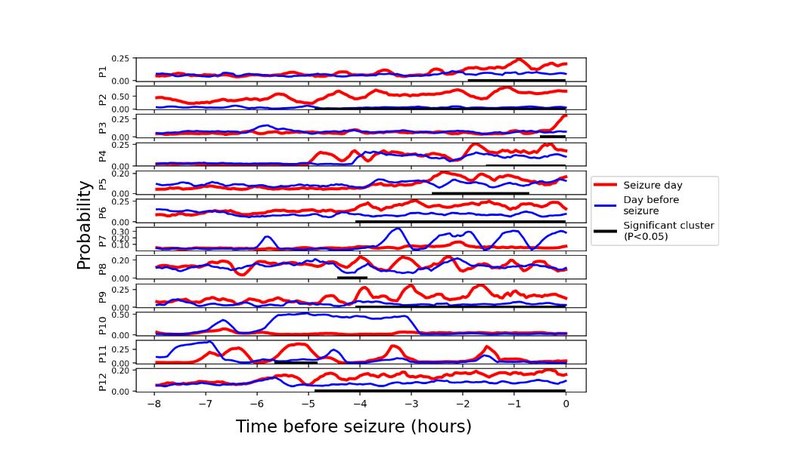Preictal high-connectivity states in epilepsy: Evidence of intracranial EEG, interplay with the seizure onset zone and network modeling
Jul 25, 2025
Extension of the High-Connectivity States (HCS) analysis to other databases
We reproduced our findings across 12 patients from three different sources, including two patients (P1 and P2) with clinical and additional psychological data: patient P1 from a collaborating hospital, patient P2 from IEEG.ORG database and patients P3–P12 from SWEC-ETHZ iEEG long-term database. In 10 out of 12 patients, centrality entropy significantly decreased within up to 8 hours preceding seizure onset, a reduction that we attributed to an increase in HCS probability. However, the 10 patients from the online database provided limited metadata, including seizure onset times but lacking crucial clinical details such as electrode labels, co-registered electrocardiogram (ECG), and validated seizure-onset zones. As a result, a more detailed analysis was performed only in P1 and P2, where richer clinical and recording data were available. For these patients, we explored the robustness of HCS probability across different referencing montages, investigated its correlation with signal and connectivity-based variables, and assessed the influence of SOZ dynamics on HCS probability.
Reference:
Preictal high-connectivity states in epilepsy: evidence of intracranial EEG, interplay with the seizure onset zone and network modeling
Brian Nicolas Medina Leandro, Manel Vila-Vidal, Ana Tost, Mariam Khawaja, Mar Carreño, Pedro Roldán, Jordi Rumià, María Centeno, Estefanía Conde, Antonio Donaire and Adrià Tauste Campo
Journal of Neural Engineering (2025)

Share: